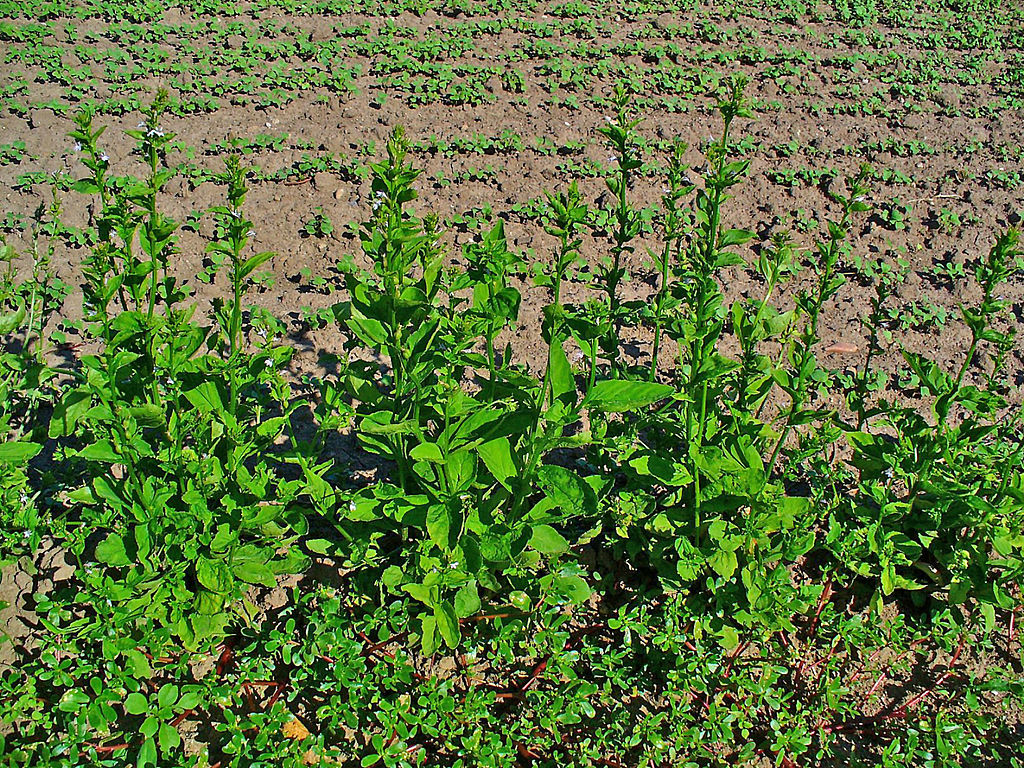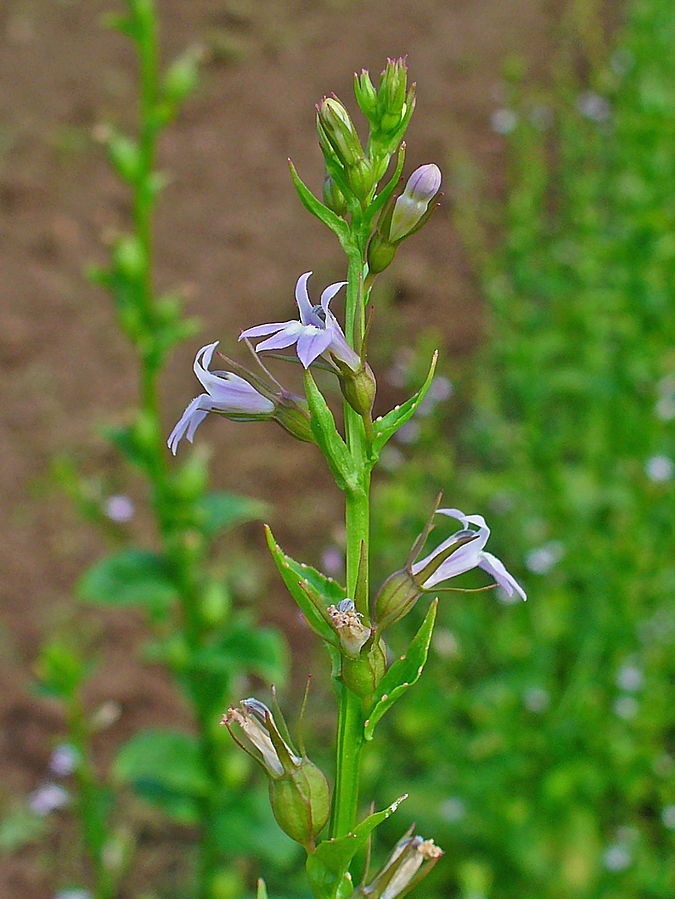
Also known as puke weed, this herbaceous annual or biennial is native to eastern North America from southeastern Canada, south to Alabama and west to Kansas, where it grows in fields, woods, and waste places. It is a member of the bellflower family, Campanulaceae, that also includes balloon flower (Platycodon), and ladybell (Adenophora). The plant grows 6-40″ tall from a taproot and has erect stems usually covered with bristly white hairs. The stem may be unbranched or branched in the upper portions and carries alternate, lanceolate to ovate leaves that are 2-3″ long and have toothed margins. From mid summer to fall, racemes of tubular, pale blue to white flowers appear but only 1-2 flowers bloom at a time. The flowers are about 1/3″ long and have a yellowish base with tufts of white hairs, a 3-lobed lower lip and 2-lobbed upper lip, and calyx with 5 narrow prong-like lobes. The fruit that follows is a papery inflated capsule 1/3″ across, and contains numerous tiny translucent, golden brown seeds. The nectar attracts small bees, but the acrid foliage is highly toxic and avoided by mammals. The leaves of Indian tobacco were smoked by Native Americans. The plant has been used in folk medicine in the past and is now used to deter smoking tobacco. The genus name, Lobelia, honors the Flemish botanist Matthias de Lobel (1538–1616). The specific epithet, inflata, is the Latin word meaning swollen or inflated and refers to the bladder like fruit. H. Zell Wikimedia Commons

Type: Herbaceous annual or biennial
Bloom: Clusters of pale blue to white flowers from mid summer to fall
Size: 6-40″ H
Light: Part sun
Soil: Average, moist to dry, well-drained; tolerates poor soil
Hardiness: NA
Care: Contain of plant becomes weedy
Pests and Diseases: None of significance
Propagation: Cuttings, seed
Photo Credit: H. Zell Wikimedia Commons